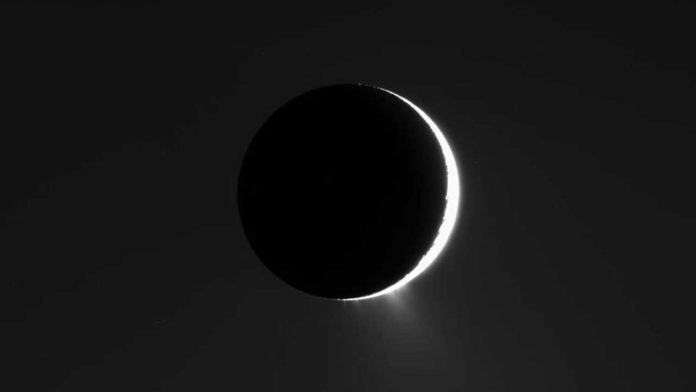Recent data from NASA’s Cassini mission reported about new organic compounds found in the plumes bursting from Saturn’s moon Enceladus. Scientists discovered compounds such as nitrogen- and oxygen-containing organic molecules in ice grains blown out by Saturn’s moon Enceladus.
Enceladus is a small ocean world covered in ice — one of more than 60 confirmed moons orbiting Saturn.
Powerful hydrothermal vents emit material from Enceladus’ center, which blends with water from the moon’s massive subsurface ocean before it is discharged into space as water vapor and ice grains.
Similar hydrothermal vents on earth that take place on the ocean floor provide the energy that fuels the reactions. According to scientists, Enceladus’ hydrothermal vents may operate in the same way, supplying energy that leads to the production of amino acids.
Noir Khawaja, who led the research team of the Free University of Berlin said, “If the conditions are right, these molecules coming from the deep ocean of Enceladus could be on the same reaction pathway as we see here on Earth. We don’t yet know if amino acids are needed for life beyond Earth, but finding the molecules that form amino acids is an important piece of the puzzle.”
The scientists used the CDA’s mass spectrometer measurements to determine the composition of organic material in the grains.
Scientists found that the organics compound initially dissolved in the ocean, then evaporated from the water surface before condensing and freezing onto ice grains inside the fractures in the moon’s crust. Blown into space with the rising plume emitted through those fractures, the ice grains were then analyzed by Cassini’s CDA.
The new findings complement the team’s discovery last year of large, insoluble complex organic molecules believed to float on the surface of Enceladus’ ocean. The team went more in-depth with this recent work to find the ingredients, dissolved in the sea, that are needed for the hydrothermal processes that would spur amino acid formation.
Co-author Jon Hillier said, “Here we are finding smaller and soluble organic building blocks — potential precursors for amino acids and other ingredients required for life on Earth.”
Co-author Frank Postberg said, “This work shows that Enceladus’ ocean has reactive building blocks in abundance, and it’s another green light in the investigation of the habitability of Enceladus.”
These findings were published Oct. 2 in the Monthly Notices of the Royal Astronomical Society.
